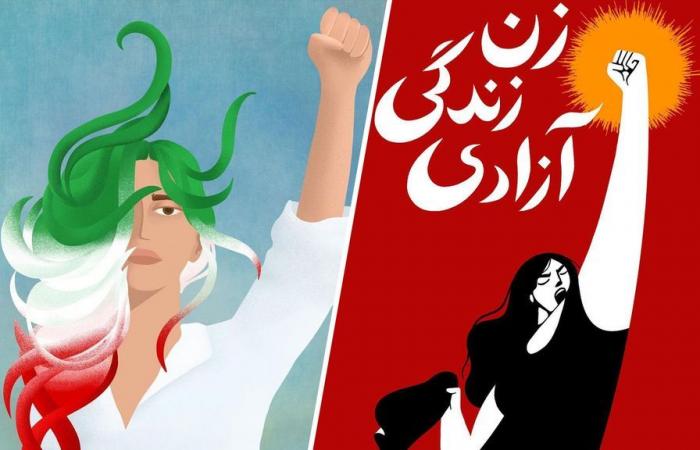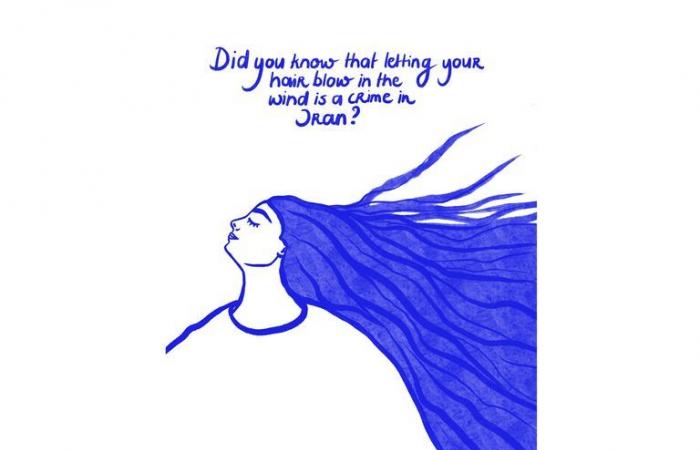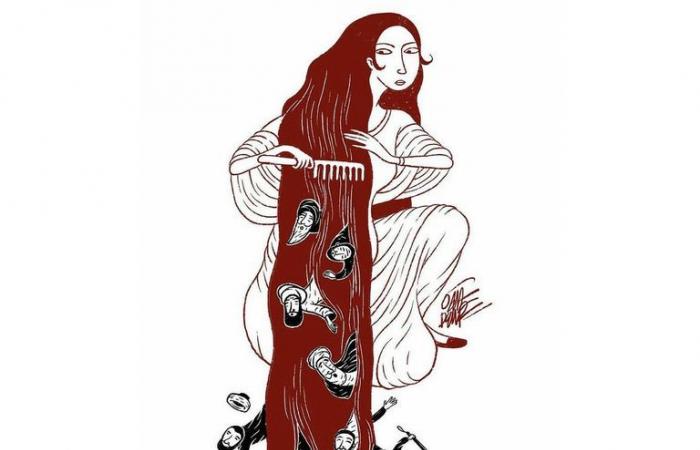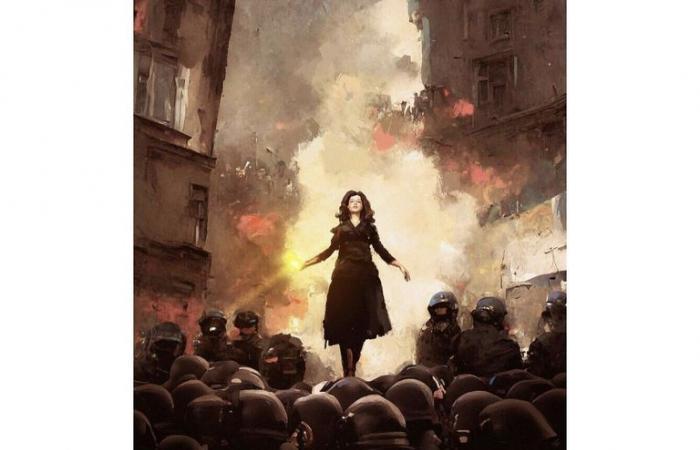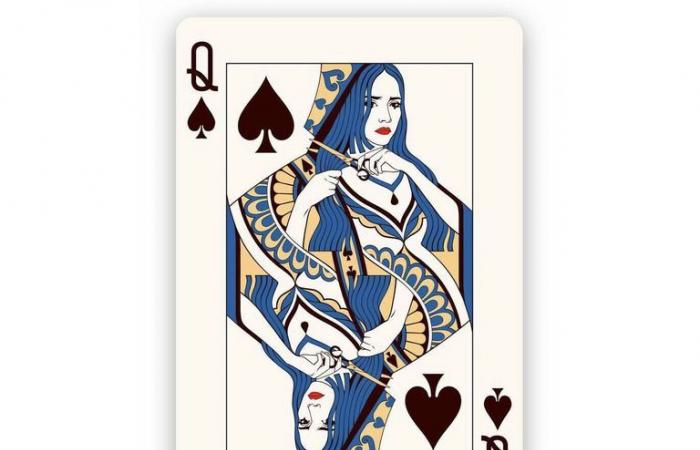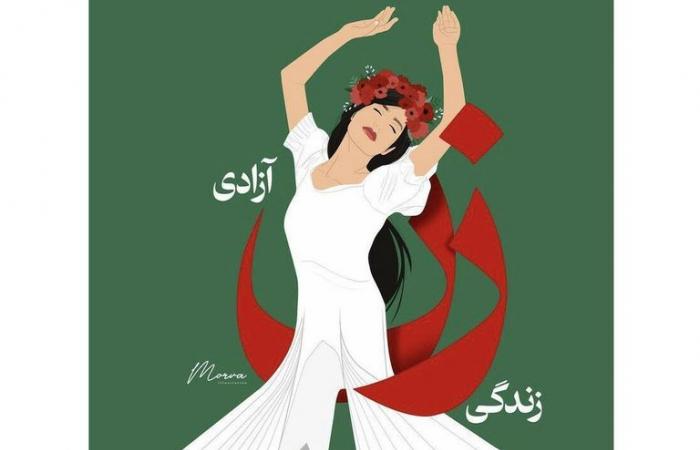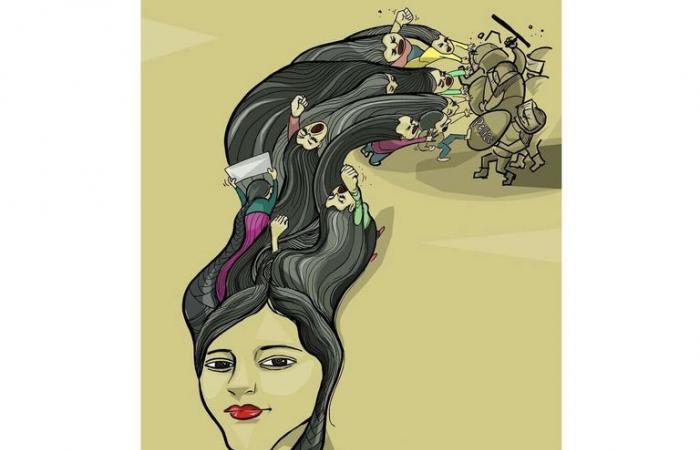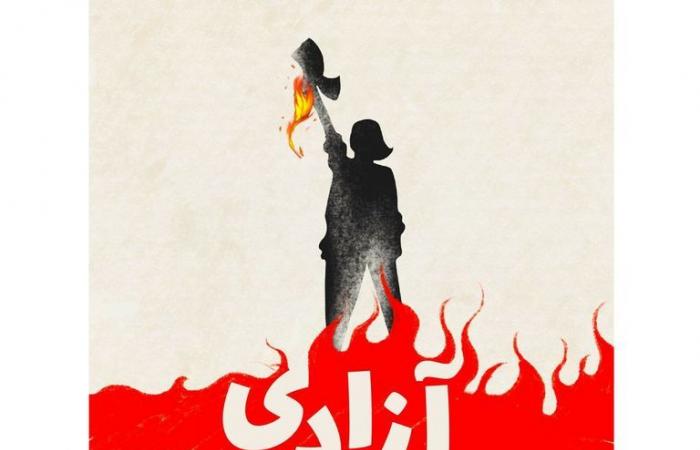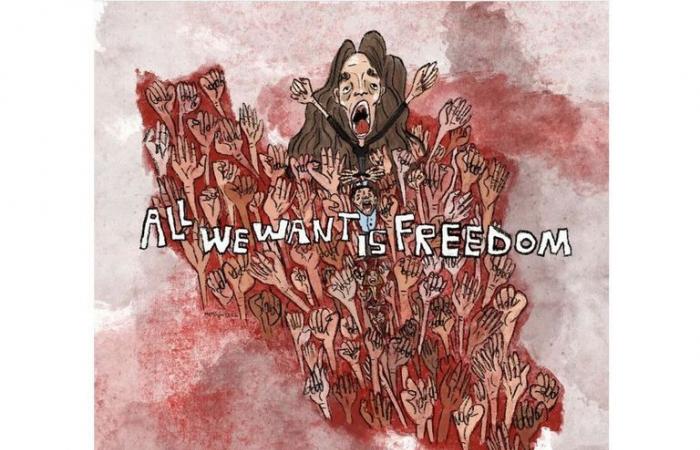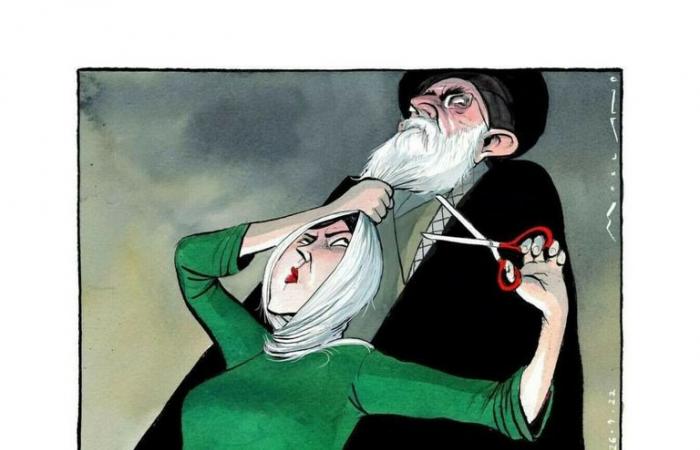Yael Hofri / Vahid Fazel
NOS News•today, 18:42
-
Eliane Lamper
editor Online
-
Eliane Lamper
editor Online
Women with their fists in the air and schoolgirls who defy the security forces without a headscarf: these are penetrating images that have come out since the start of the protests in Iran. The death of Kurdish-Iranian Jina Mahsa Amini not only sparked popular anger in the streets, but also led to massive protests on social media.
Iranians use their creativity to express their opposition to the regime. Through the slogan ‘Woman, life, freedom’, songs and protest art, the call for freedom in the country is brought to the attention of millions of people worldwide.
The Iranian-Dutch designer Sara Emami also made illustrations. One of the images shows a woman with long hair, captioned: “Did you know that letting your hair blow in the wind is a crime in Iran?”.
-
Sara Emami
-
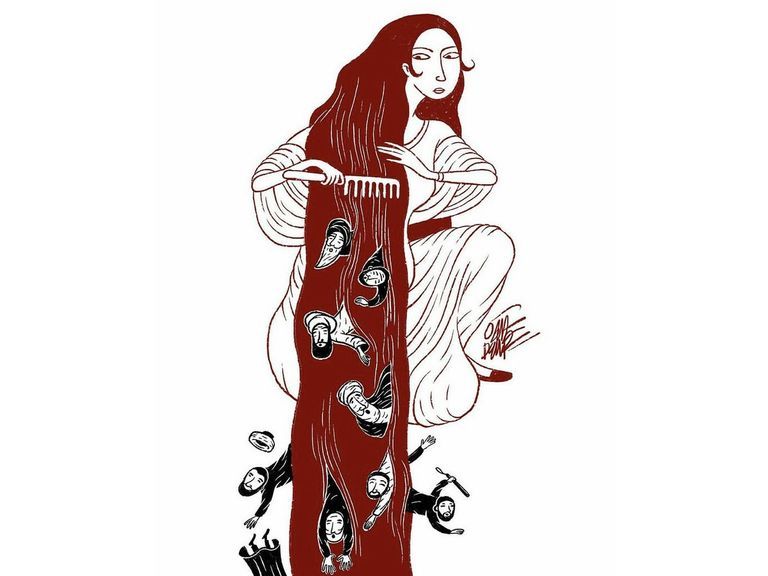
Oguz Demir
-
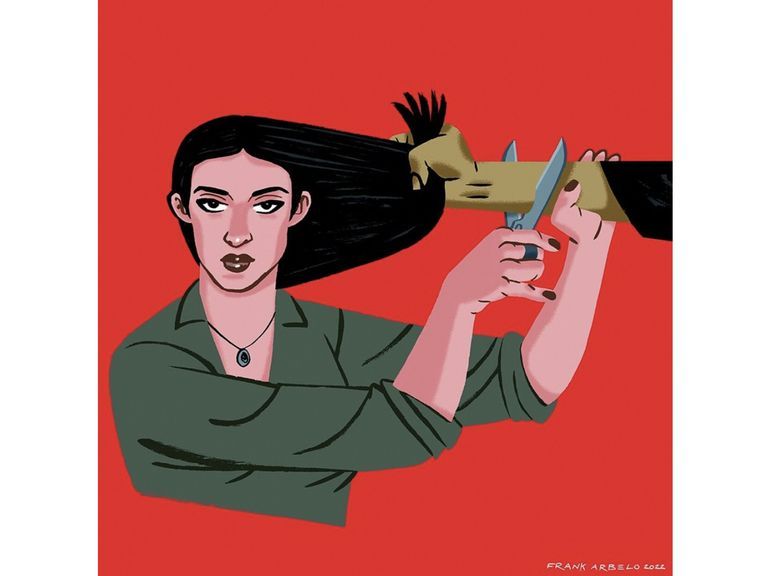
Frank Arbelo
-
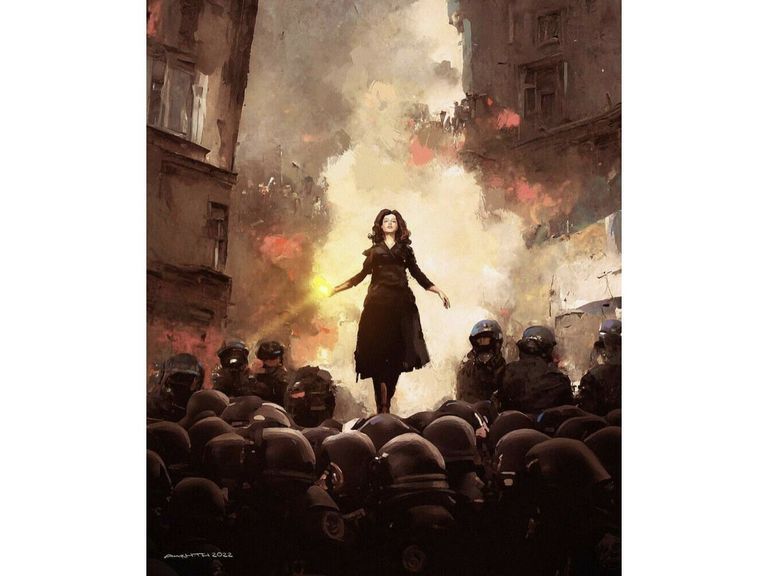
Unknown
-
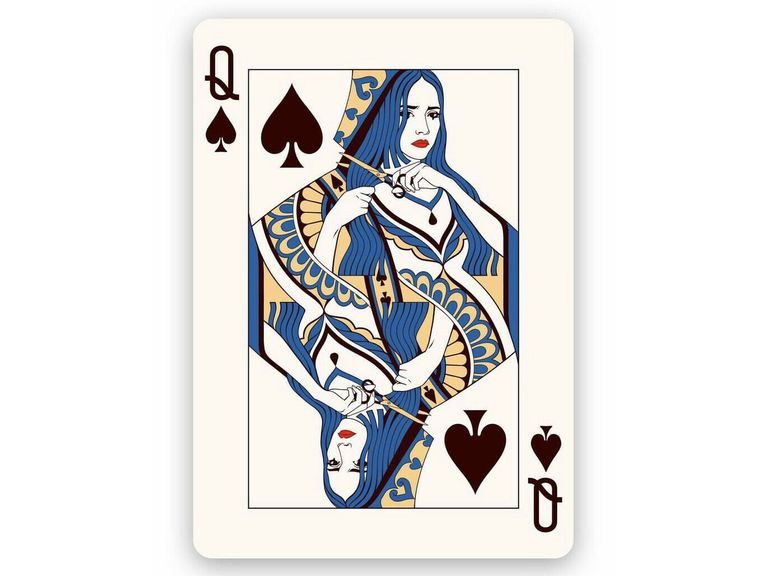
Mahdieh Farhadkiaei
With the poster she hopes to explain what is going on. “I notice that people find it difficult to understand what is going on in Iran,” Emami says. “That way everyone can imagine it.” She saw her illustrations at large solidarity demonstrations in Los Angeles, Tokyo, Berlin and Oslo, among others.
The protest art that is now made and distributed by mostly the ‘TikTok generation’ is accessible to everyone, regardless of cultural background, says Nafise Motlaq. The Iranian is a photographer and media scientist at the Nisantasi University in Istanbul. “Whatever country you come from, everyone can understand the images and feel what they say.”
Mahsa Amini is an iconic woman who has grown bigger than herself.
For twenty years, Motlaq has closely followed protests in Iran and the protest art that is used. “The posters were previously made by professional cartoonists, and often carried the same message. People who are oppressed, are locked up, are suffocated. They ask for help or ask to pray for them.”
Now Motlaq sees illustrations that mainly depict courage and strength, and sometimes pain as well. The images often show women with long, flowing hair raising their fists in the air. “It’s often a woman standing alone and brave, confident and calm,” Motlaq said based on her analysis of 100 protest images. “She wants individual freedom, and does not represent a specific economic class, ethnicity or religious group.”
Also, the faces of young women and girls who have been killed by violence can often be seen in the images, especially the face of Mahsa Amini. “An iconic woman who has grown bigger than herself,” says Motlaq. Other common themes include the map of Iran, depicted as a woman, the use of blood, and the Azadi Tower in Tehran, the capital’s most famous building with a name that means “Freedom Tower” in Persian.
-
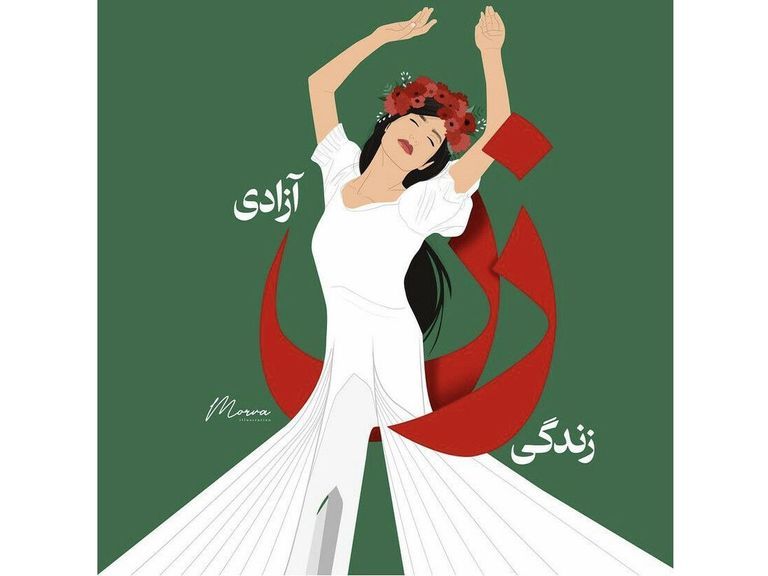
Morva illustrations
The Azadi Tower in Tehran that turns into a dancing woman -
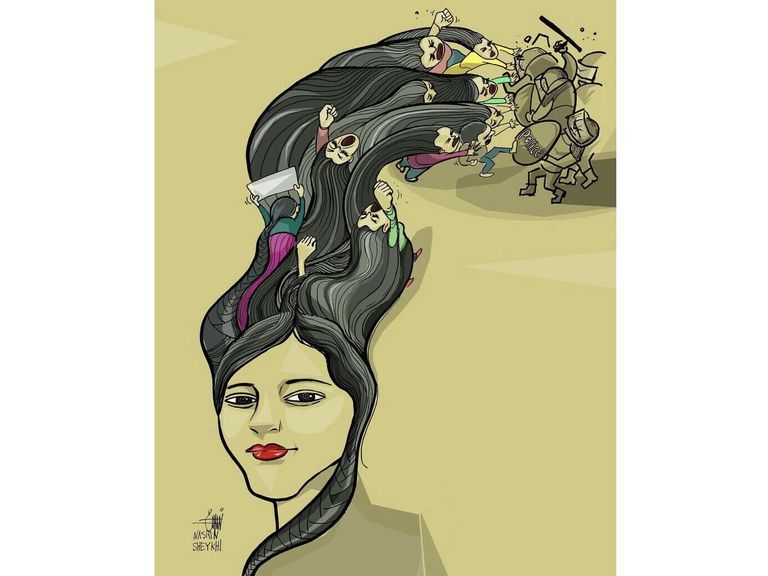
Nasrin Sheykhic
The face of Mahsa Amini -
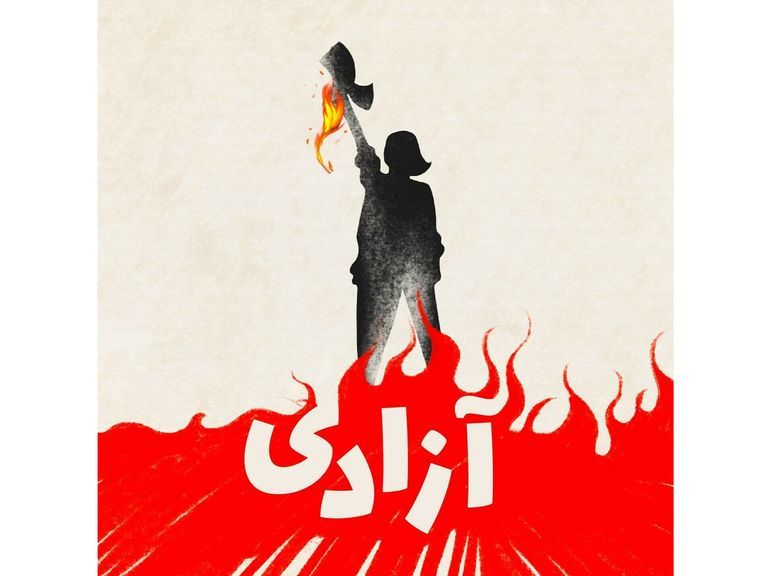
pegamy
‘Freedom’ in Persian -
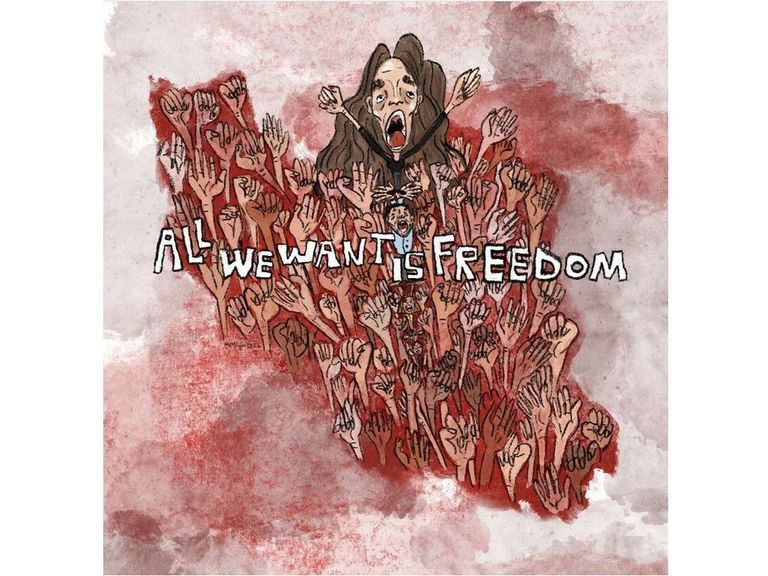
I am Heliya
-
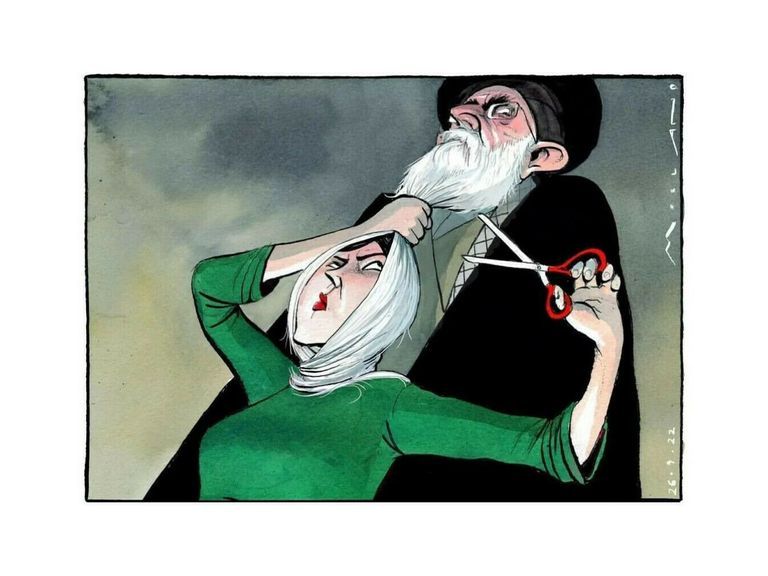
Morten Morland
Women’s hair is also a frequent symbol in protest art. Women rebel by taking off the obligatory headscarf and thus claim their freedom. “It’s not just about the choice of whether or not to cover the hair, but symbolizes that the whole system has to change.” Emami agrees: “It has become a symbol for everything that is wrong, for all kinds of oppression.”
Images show how ayatollahs are chased away by the women’s hair. Also, the cutting of hair can be seen a lot. This also has a symbolic meaning: the women figuratively cut off the power that the regime has over them.
‘Woman, life, freedom’
Emami’s other illustration is inspired by a photo of Iranian girls. They take off their headscarves at school and turn over the portrait of the supreme leader Khamenei, and then write on it the slogan ‘Zan, zendegi, azadi’, or ‘Woman, life, freedom’. “I was so moved. It is incredibly brave that they dared to do this,” says Emami. “This drawing represents their courage, and also the hope for a better future for the new generation.”
“I don’t know if these illustrations reach those girls, but this way we don’t forget them,” Emami says. “We must remain a voice for them. I feel responsible for that. I am not a politician, but I am creative. This feels like my duty.”

